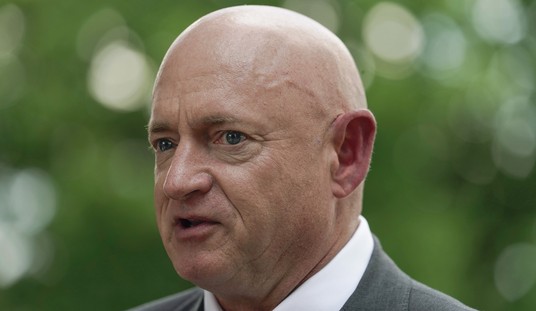Michelle Singletary at the Washington Post says that whether or not America achieves President Obama’s goal to “once again have the highest proportion of college graduates in the world” depends on how much the taxpayer is willing to spend. “To reach Obama’s goal, we have to decide, as a matter of public policy, whether college is a right or a privilege.”
She believes it is a right. Otherwise only the rich will be able to go to college in this era of rising educational costs. Singletary writes:
There are those who will decry even asking if college is a right or a privilege. Nonetheless, the question must be asked and answered.
If going to college is a right and vital to our nation’s economic standing, then government will have to do more to make it affordable for all. If it’s a privilege, only the nation’s wealthiest families will one day be able to send their children to college. Or are we damning a large percentage of our citizens to burdensome student loans, leaving them to conclude college isn’t worth it?
But if Singletary were to reflect, what she probably means is that the lifestyle that graduation from college is meant to afford is what she desires as a right. What is the point of making a college education a “right” if it doesn’t make an economic difference? One of the “we are the 99 percenters” recently held up a hand-lettered sign which complained that all her master’s degree qualified her for was work as a housekeeper.
What Singletary probably wants as a “right” is guaranteed access to a car, house, and all the goodies which were once correlated with attending tertiary education. A worthless degree isn’t much of a right. It is hardly a “privilege.”
There are other rights too, such as the right to decent housing, that society is supposed to provide. After mandating “affordable housing” under Fannie Mae and Freddie Mac, the federal government is now engaged in paying banks to keep from foreclosing homes. “More good California-based news for President Barack Obama: Bank of America Corp. has become the first large mortgage provider in the Golden State to take part in a federally funded ‘Keep Your Home’ program that would pay banks to reduce the balances that struggling California homeowners owe them.”
After the bubble burst, I recall asking a friend where all the money went as million-dollar tract houses lost half their value. He laughed, and pointed to his new RV — a reminder of how prevalent it was for Californians to view their quickly appreciating houses as piggy banks. No doubt, predatory lenders engaged in fraudulent practices during the price run-up, but there’s much more to this story than that storyline. …
Virtually every aspect of the lending process is governed by federal rules, so it’s nonsensical to argue that the banks were unregulated. Our political leaders seem to be forgetting, also, that it was direct government policy to arm-twist banks into giving out loans to unqualified buyers. The Community Reinvestment Act scored banks based on the number of loans they provided to low-income people.
As John McClaughry wrote in Reason magazine in December, “By 1995 the CRA had become a powerful tool in the hands of ACORN and allied activist organizations,” referring to the Association of Community Organizations for Reform Now. “Unless a bank could silence their protests by making (and passing on to Fannie Mae) the demanded amount of subprime loans, it faced serious difficulties in obtaining regulatory approval for branching, merging, and other corporate decisions.”
This stemmed from an ideology, supported in Republican as well as Democratic circles, that viewed homeownership as the key to a prosperous life. In pricey California, lenders — and governments, which often offered residents down-payment assistance and low-interest loans — got ever more creative so that they could help buyers afford median home prices that soared above $600,000 in many urban markets.
The trouble was that, like a college education, home ownership was partly the consequence and not the cause of middle class earning power and work habits. A diploma and mortgage did not bestow the characteristics of a winner on its recipients. People who could never pass a rigorous tertiary educational course or pay off a mortgage couldn’t do so even with government “help.” It just pushed them in over their heads.
The story in the housing market is well known. But now it’s happening in education. The bursting bubble which largely contributed to the 2008 financial meltdown is back — this time in the form of unpayable student loans.
Sheryl Nance-Nash at Forbes writes that “with student loan debt now topping U.S. credit card debt and few or no options available for distressed borrowers (including parents who co-signed and now face the loss of nest eggs, retirement homes and other assets), America faces the very real possibility of another major economic threat on par with the devastating home mortgage crisis, according to a new survey and report, Student Loan ‘Debt Bomb’:America’s Next Mortgage-Style Economic Crisis, by the National Association of Consumer Bankruptcy Attorneys (NACBA).”
Student borrowing crossed the $100 billion threshold for the first time in 2010 and total outstanding loans exceeded $1 trillion for the first time last year. … To put the heart-wrenching picture in perspective, Dave Ingham, a disabled Vietnam vet who co-signed for student loans for his son, shared his story at the press conference. “I have been personally and gravely affected by the student loan bankruptcy crisis and I know our family is one only of many thousands across America facing these issues.”
He and his wife live in a condo outside Minneapolis. She barely receives $500 a month in social security. The couple’s 35 year-old son lives with them, otherwise he would be homeless. He defaulted on his student loans as he has been out of work since October of 2009. “He is on medication for depression and anxiety. He keeps looking for work, but when an employer does a credit check they see the default, so he doesn’t get the job. It’s a vicious cycle,” said Ingham, who is being sued by a collection agency representing Sallie Mae. “My wife and I stand to lose our assets, including our condo. I realize my son made a mistake by being taken in by predatory lenders, but that does not mean his life and ours should be allowed to be ruined by these people.”
The answer suggested by some is to walk away from the “predatory lenders” who lent the students money to pay colleges to earn their worthless degrees. To fix things, President Obama is considering announcing a plan, without any need for congressional approval, to allow “some 1.6 million students to cap their loan payments at 10 percent of their discretionary income starting in 2012.”
Somebody is going to pay for the losses arising from the write-down on the student loans. Besides the holders of the debt, that someone is likely to be the taxpayer. The principal beneficiaries are going to those who made poor choices in their educational borrowings and the guys who provided the education. They’ve got theirs. If the banks have to take a haircut — well, the government can help them out.
And the bigger the mistake they made, the more they get compensated. At least that’s the way it is working out in mortgages.
The bulk of the settlement money — an estimated $18 billion — will flow to the perennial home of social experimentation, California. Partly that’s because of the holdout tactics of California AG Kamala Harris, who undoubtedly drove a tough bargain with her fellow AGs. But it’s also because so much of the state’s real estate is underwater.
“California gets an extraordinary amount of it,” Miller acknowledged. “One of the amazing things was how much of a problem there is in California.”
See? It doesn’t matter if you did the correct thing. If somebody else screws up, you have to pay for it. Why? Because it is their right.
The word “rights,” which once started out as an enumerator of what government could not do, has now become it’s reverse: the collection of positive rights. These are now a laundry list of what government must provide. At taxpayer expense of course. Otherwise the government can just print the money to pay for it. Either way, it’s “free.”
How to Publish on Amazon’s Kindle for $2.99
The Three Conjectures at Amazon Kindle for $1.99
Storming the Castle at Amazon Kindle for $3.99
No Way In at Amazon Kindle $3.99, print $9.99











Join the conversation as a VIP Member